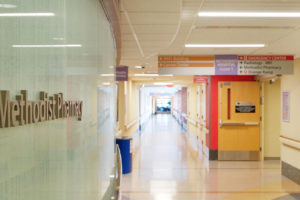Wayfinding and Safety Issues in Building Design and Architecture

Let’s face it: designers often think of wayfinding as an afterthought, a problem easily solved with signage. The truth, of course, is that wayfinding is a critical part of building design and architecture. Signage is only the end product, but the process of determining what signage is to deployed, how it should look, how big or small it needs to be, how it extends the facility’s branding and marketing needs, and how functional, logical and seamless it is to the facility’s employees and guests, is too important to leave to the final stages of building design and construction. Indeed, one of the major considerations when designing and implementing a wayfinding system for a building is safety. Few immediately conflate signage with safety and security, but when you think of the demographics of the general population, the way that people navigate a facility, and even the maintenance requirements of the building as a whole, it’s clear that wayfinding signage can play a significant role in ensuring the safety of its inhabitants and visitors.
- Demographic changes. According to the Centers for Disease Control (CDC), there are over 19 million non-institutionalized adult Americans with vision trouble. Over 36 million have a “physical functioning difficulty” of some kind, or about 16% of all Americans. About 65% of American adults 65 years of age or older have at least “one basic functions difficulty or complex activity limitation.”In addition, 7 million Americans are reportedly illiterate, and a whopping 30 million can’t read a simple sentence. As the U.S. population ages, the number of Americans with some form of disability increases, and the problem of illiteracy or low-literacy remains a stubborn challenge, the issue of safety in navigating interior and exterior spaces should be paramount in the design and implementation of wayfinding systems that provide assistance to these populations and that also meet Americans with Disabilities Act (ADA) requirements.
- The psychology of human wayfinding. We humans generally do a terrible job of navigating a dark space. Our minds are also wired to make certain choices when faced with decision points while maneuvering through a building. When we turn a corner and face a dimly lit hallway, for most of us our natural inclination is to retreat and start over. Our mental GPS systems also work less efficiently when under stress, such as what happens when we’re desperately trying to find a hospital emergency room or are walking through a dark university campus at night. Are the signs pointing the way to the ER entrance clear, large and bright even under low-light conditions? Is the campus designed in such a way that people can move from one building to another smoothly and without obstruction?
- Building maintenance requirements. Humans aren’t the only ones that weaken as age catches up with us. Even the most sophisticated wayfinding systems and signage networks must be monitored for possible deterioration and downtime. Many large metropolitan areas now use digital signage to alert commuters to accidents and construction work on major thoroughfares. Hospitals and universities continually invest in renovation and expansion projects, requiring regular updates to their signage and wayfinding so that students, patients, visitors, and staff can avoid potentially hazardous conditions and road work and easily find their way to their respective destinations without disorientation or confusion.

